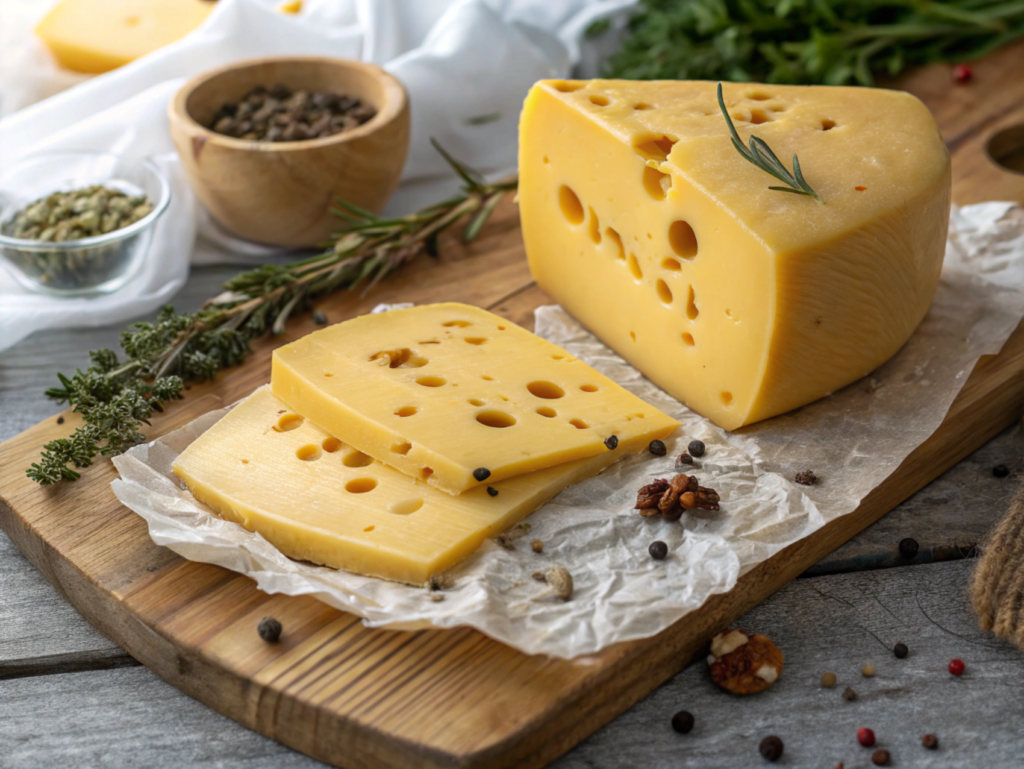Cheese is a beloved staple worldwide, with each region offering its own distinct varieties. Among these, Dutch cheese stands out for its unique flavors, textures, and rich history. But what makes Dutch cheese truly special compared to its global counterparts? Let’s delve into its defining characteristics.
Historical Background of Dutch Cheese
The Netherlands boasts a cheese-making tradition that dates back to the Middle Ages. Iconic varieties like Gouda and Edam were developed as key parts of thriving local economies. Over time, the Netherlands became a leader in cheese production and export, directly influencing global cheese-making techniques.
For a closer look at different types of Dutch cheese, check out this guide to Dutch cheese varieties. With such a rich history, it’s no wonder Dutch cheeses remain popular.
Overview of Global Cheese Varieties
Cheese-making is not unique to the Netherlands; regions like France, Italy, and Switzerland are renowned for their iconic varieties:
- France: Brie, Camembert, and Roquefort are celebrated for their creamy and complex flavors.
- Italy: Parmesan and Mozzarella are staples in Italian cuisine, offering bold and versatile tastes.
- Switzerland: Emmental and Gruyère are known for their distinct textures and nutty profiles.
However, Dutch cheese remains distinctive due to its unique flavors and aging processes. Learn more about the history of Dutch cheese to appreciate its global influence.
Unique Characteristics of Dutch Cheese
So, what makes Dutch cheese stand out from the crowd? Here are a few key reasons:
- Flavor Profiles: Dutch cheeses are known for their mild, slightly sweet, and nutty flavors, making them versatile and crowd-pleasing.
- Texture: Typically semi-hard to hard, these cheeses are smooth yet firm, ideal for slicing or melting.
- Distinct Appearance: Many Dutch cheeses, like Edam and Gouda, are wrapped in colorful wax coatings that preserve freshness and add visual appeal.
Production Methods of Dutch Cheese
The traditional methods used in the Netherlands give Dutch cheese its unique identity:
- Milk Quality: Dutch cheeses are primarily made from high-quality cow’s milk, but goat and sheep varieties are also available.
- Unique Cultures and Techniques: Specific bacterial cultures are used to create the desired textures and flavors.
- Wax Coatings: This method helps preserve cheese during long storage periods and ensures its freshness for export.
These production methods differ significantly from those used in other regions, further enhancing the uniqueness of Dutch cheese.
Aging and Ripening Processes
The aging process is crucial to the flavor and texture of Dutch cheese. Here are its categories:
- Jong (Young): Mild and creamy with a soft texture.
- Belegen (Aged): Richer flavor and firmer texture.
- Oud (Old): Intense flavor with a crumbly texture.
Since the aging process significantly affects taste, Dutch cheeses can cater to a variety of palates. Unlike other cheeses, their structured aging ensures a consistent, high-quality result.
Cultural Significance of Dutch Cheese
Cheese plays a vital role in Dutch culture:
- Cheese Markets: Traditional cheese markets, like those in Alkmaar and Gouda, are popular tourist attractions.
- Economic Importance: Cheese production contributes significantly to the Dutch economy, supporting thousands of jobs.
- Cultural Identity: Dutch cheese has become a symbol of national pride, celebrated in festivals and local cuisine.
Comparative Analysis: Dutch Cheese vs. Other Cheeses
When compared to other global varieties, Dutch cheese offers:
- Versatility: Perfect for slicing, melting, or snacking.
- Mild Flavor: Its approachable taste appeals to a wide audience, unlike some stronger cheeses.
- Unique Preservation: Wax coatings and specific aging techniques make Dutch cheeses suitable for long-term storage.
A Delicious Recipe Featuring Dutch Cheese
If you’re inspired to use Dutch cheese in the kitchen, try this tasty recipe:
Dutch Cheese Omelette: A quick and satisfying breakfast dish made with melted Gouda and fresh herbs.
For detailed instructions on these recipes and more, visit Tasty Simply Recipes. Explore it to find innovative ways to enjoy Dutch cheese in your meals.
FAQs
What are the Dutch cheeses?
Dutch cheeses include popular varieties like Gouda, Edam, and Leerdammer. These cheeses are known for their mild flavor and creamy texture. Learn more on Wikipedia about Dutch cheeses.
Are Gouda and Edam the same?
No, Gouda and Edam are different. Gouda is richer and creamier, while Edam is firmer and often has a milder flavor. Both are iconic Dutch cheeses with their own unique characteristics.
What kind of cheese is in Amsterdam?
In Amsterdam, you’ll often find a variety of Dutch cheeses, including Gouda and Edam. Local shops also feature aged cheeses and specialty varieties, offering a true taste of Dutch culture.
What is the Dutch cheese with holes in it?
The Dutch cheese with holes is Leerdammer, often compared to Swiss Emmental. It has a nutty flavor and a semi-hard texture, making it a popular choice.
Conclusion
Dutch cheese stands apart due to its rich history, unique production methods, and global appeal. Whether you’re savoring a young Gouda or an aged Edam, the distinctive qualities of Dutch cheese make it a standout choice for cheese lovers. For more about cheese varieties worldwide, check out the Wikipedia page on cheese. Embrace the diversity and enjoy the flavors that only Dutch cheese can offer!
